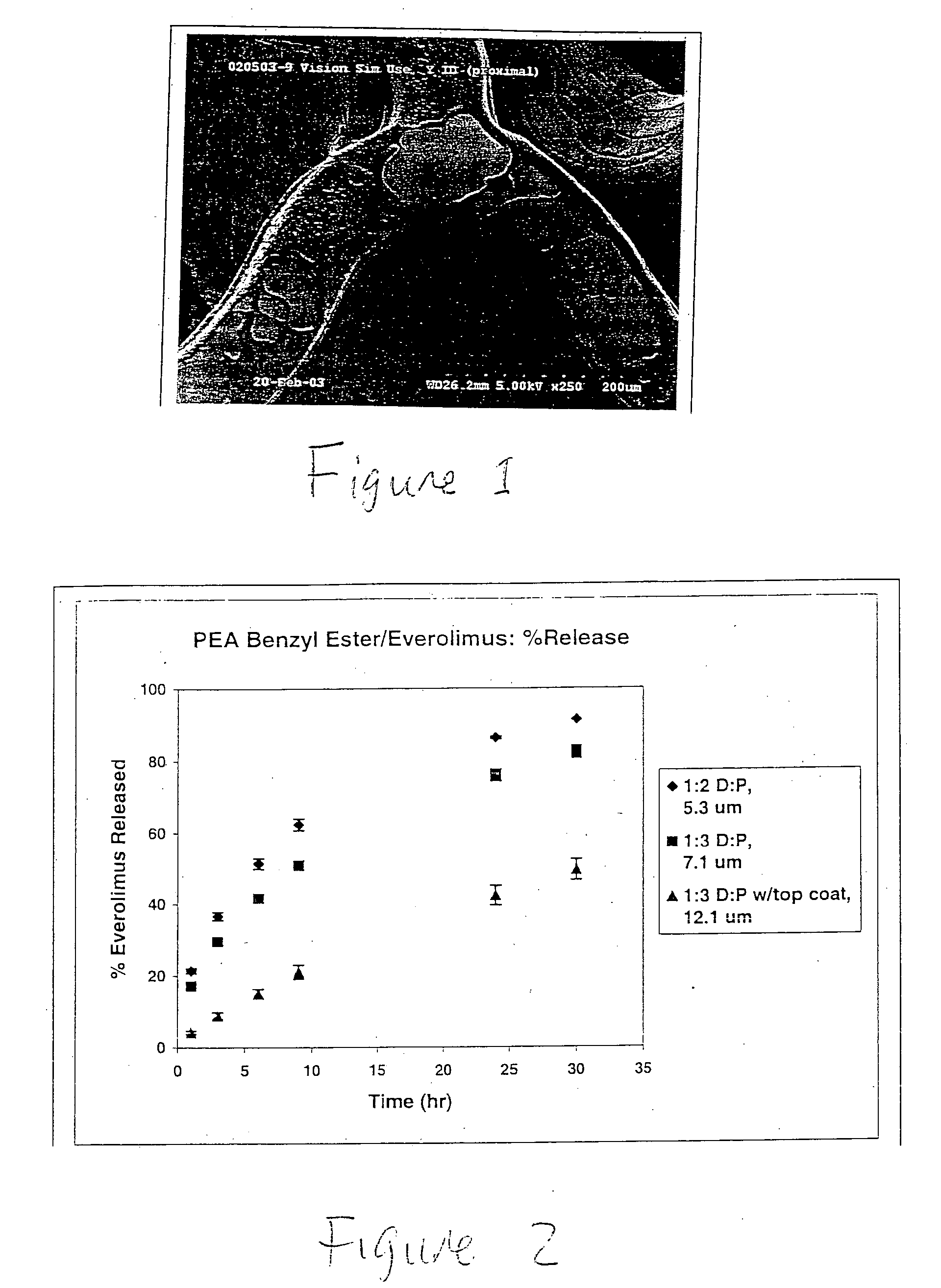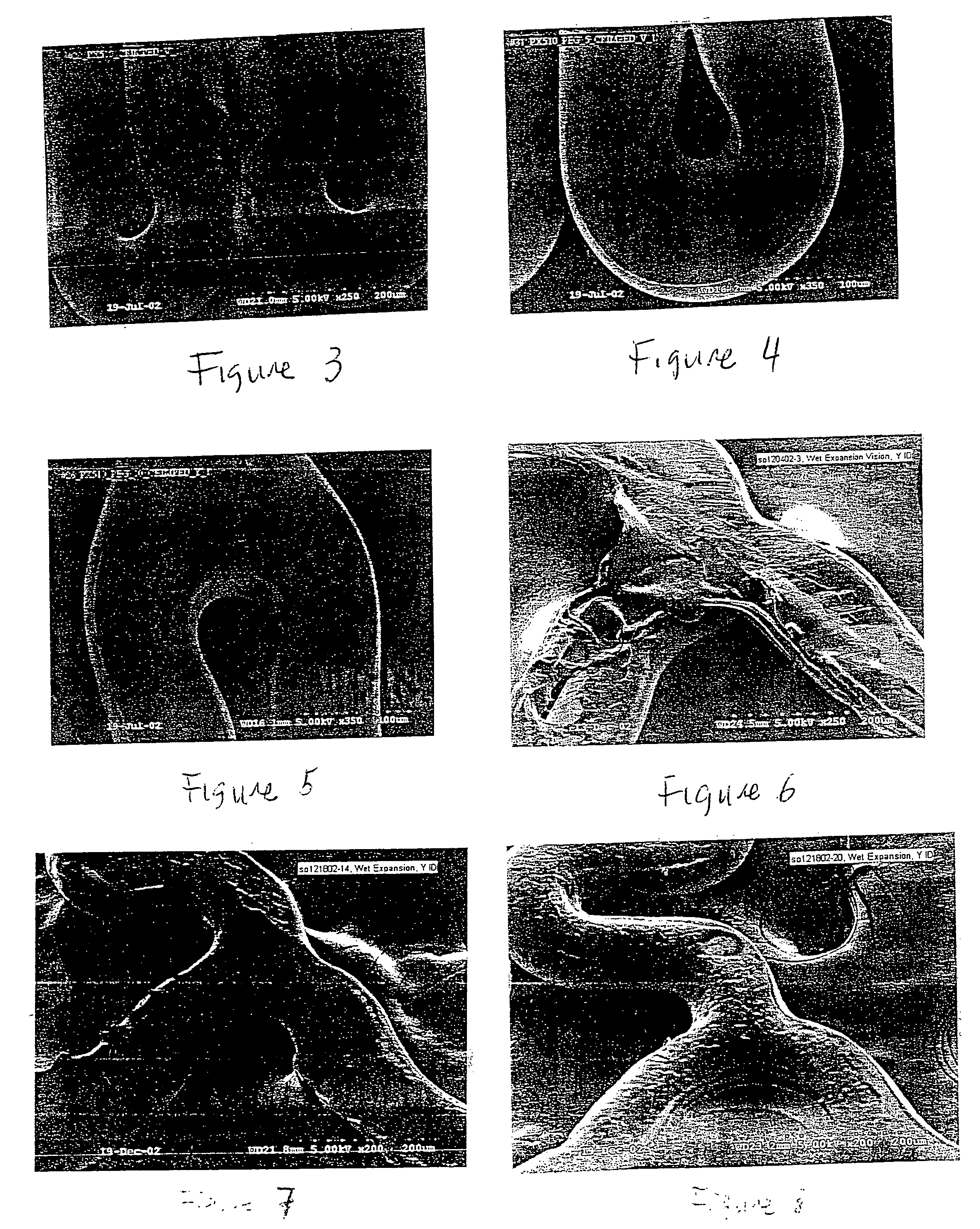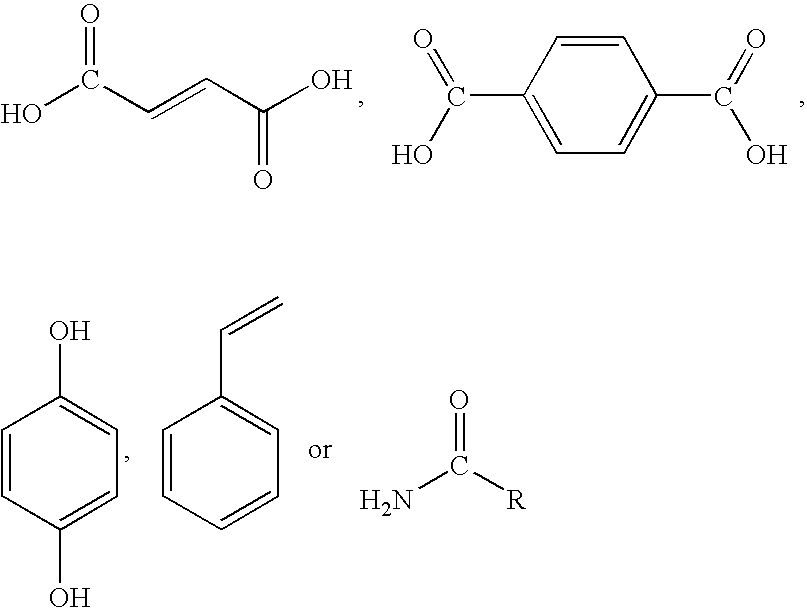Methods for modulating thermal and mechanical properties of coatings on implantable devices
a technology of thermal and mechanical properties and coatings, applied in the field of coating compositions for coating implantable devices, can solve the problems of inability to use stents, inability to achieve medical effects, and inability to achieve stent feasibility, etc., to achieve the effect of broadening the molecular weight distribution of polymers, reducing the tg of polymers, and reducing the molecular weigh
- Summary
- Abstract
- Description
- Claims
- Application Information
AI Technical Summary
Benefits of technology
Problems solved by technology
Method used
Image
Examples
example 1
[0091] Penta™ 13 mm stents (available from Guidant Corp.) were coated as described in the following:
[0092] A composition containing 400 μg PolyAspirin PX510 (Tg 45° C.) in a concentration of 2% (w / w) in chloroform was sprayed onto one stent. Each stent was rotated about the stent's central longitudinal axis at a speed of 3 rpm during coating. After a waiting period of 1 second following the application of the composition, warm air of approximately 80° C. was directed from an air gun onto each stent for 15 seconds to remove most of the solvent. The coated stent was dried for about 45 minutes in an oven at about 80° C. The stent was then subject to a crimp test. An SEM image of the coated stent is shown in FIG. 3.
example 2
[0093] Penta™ 13 mm stents were coated as described in the following:
[0094] The Penta™ stents were coated with a composition containing a 400 μg mixture of high Tg PolyAspirin PX510 (PA) (Tg=45° C.) and PEG (Mw 18.5K) (Tg=−0.41° C.) (PolyAspirin:PEG=19 / 1 w / w) in a total concentration of 2% (w / w) in chloroform and then dried at about 80° C. for 45 minutes in an oven. The Tg of the coating of this polymeric mixture (Tg mix) is 40.7° C. (Tg mix=5% Tg PEG+95% Tg PA=40.7° C.) The stents were then subject to a crimp test. An SEM image of the coated stent is shown in FIG. 4.
example 3
[0095] Penta™ 13 mm stents were coated as described in the following:
[0096] The Penta™ stents were coated with a composition containing a 400 μg mixture of high Tg PolyAspirin PX510 and PEG (Mw 18.5K) (PolyAspirin:PEG=9 / 1 w / w) (Tg mix=10% Tg PEG+90% Tg PA=36.4° C.) in a total concentration of 2% (w / w) in chloroform and then dried at about 80° C. for 45 minutes in an oven. The stents were subject to a crimp test. An SEM image of the coated stent is shown in FIG. 5.
PUM
| Property | Measurement | Unit |
|---|---|---|
| Tg | aaaaa | aaaaa |
| glass transition temperature | aaaaa | aaaaa |
| Tg | aaaaa | aaaaa |
Abstract
Description
Claims
Application Information
 Login to View More
Login to View More - R&D
- Intellectual Property
- Life Sciences
- Materials
- Tech Scout
- Unparalleled Data Quality
- Higher Quality Content
- 60% Fewer Hallucinations
Browse by: Latest US Patents, China's latest patents, Technical Efficacy Thesaurus, Application Domain, Technology Topic, Popular Technical Reports.
© 2025 PatSnap. All rights reserved.Legal|Privacy policy|Modern Slavery Act Transparency Statement|Sitemap|About US| Contact US: help@patsnap.com



